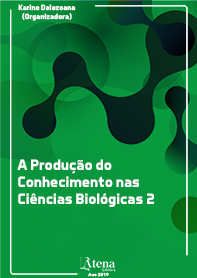
USO DE TANINO, ÓLEOS FUNCIONAIS E FRACIONADO DE LEVEDURAS COMO SUBSTITUTOS DA VIRGINIAMICINA EM GRÃOS INTEIROS DE MILHO
O presente estudo avaliou o desempenho de alguns produtos naturais em comparação com a virginiamicina para que se possa substituir essa molécula sintética, na dieta de bovinos. Os produtos são: Tratamento 1 – 25 mg de virginiamicina/kg de MS da ração; tratamento 2 – 1,5 g de tanino/kg MS da ração; tratamento 3 – 1,5 g de tanino mais 150mg de óleos essenciais / kg MS da ração; tratamento 4 – 150mg de óleos essenciais/kg MS da ração e tratamento 5 – 7g/cabeça dia, de fracionado de levedura, na MS da ração. Foi realizada uma adaptação, por 15 dias, antes do confinamento com feno a vontade, sendo inseridas a cada 2 (dois) dias 500g de ração até a completa retirada do volumoso. Todas as manhãs, 7h foram fornecidas as rações para os bois, na proporção de 2% do peso vivo. As sobras foram pesadas e a ração fornecida também. Foram avaliados pH do fluído ruminal, degradação in situ. 24h, nitrogênio ureico no sangue, amido fecal, alimentos e sobra. Foi utilizado análise estatística SAS 9.0 com variáveis com medidas no tempo para comportamento ingestivo, pH do fluído ruminal e nitrogênio ureico no sangue. Variáveis sem medidas repetidas no tempo para consumo médio de matéria seca, amido fecal e degradação in situ. Significância declarada para P < 0,05 e tendência declarada quando P < ou = 0,10. Entre todas as análises só houve efeito significativo na degradação in situ da matéria seca do farelo de soja, na associação virginiamicina x óleos essenciais sendo P = 0,01.
USO DE TANINO, ÓLEOS FUNCIONAIS E FRACIONADO DE LEVEDURAS COMO SUBSTITUTOS DA VIRGINIAMICINA EM GRÃOS INTEIROS DE MILHO
-
DOI: 10.22533/at.ed.38619230911
-
Palavras-chave: Substituição. Produtos. Tratamento. Nitrogênio. pH.
-
Keywords: Substitution. Products. Treatment. Nitrogen. pH.
-
Abstract:
The present study evaluated the performance of some natural products in comparison to virginiamycin in order to replace this synthetic molecule in the bovine diet. The products are: Treatment 1 - 25 mg of virginiamycin / kg of dietary DM; treatment 2 - 1.5 g tannin / kg DM of feed; treatment 3 - 1.5 g of tannin plus 150 mg of essential oils / kg DM of feed; treatment 4 - 150mg of essential oils / kg DM of the ration and treatment 5 - 7g / day, day of fractionation of yeast, in the MS of the ration. An adaptation was made, for 15 days, before confinement with hay at will, being inserted every 2 (two) days 500g of ration until the complete removal of the roughage. Each morning at 7 am the rations for the steers were given, at the rate of 2% of the live weight. Leftovers were weighed and ration provided as well. Ruminal fluid pH was evaluated in situ degradation. 24h, urea nitrogen in the blood, fecal starch, food and leftovers. Statistical analysis SAS 9.0 was used with variables with time measurements for ingestive behavior, ruminal fluid pH and urea nitrogen in the blood. Variables without measures repeated in time for average dry matter consumption, fecal starch and in situ degradation. Significance declared for P <0.05 and stated trend when P <or = 0.10. Among all the analyzes, there was only a significant effect on the in situ degradation of the dry matter of soybean meal, in the association virginiamycin x essential oils, being P = 0.01.
-
Número de páginas: 15
- Alliny das Graças Amaral
- Marcelo Penha


